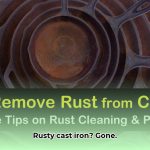Oil spots on your concrete can be a real eyesore, but they’re not invincible! This guide will equip you with the know-how to banish those blemishes, whether they’re fresh spills or stubborn, set-in stains. We’ll cover everything from simple solutions to heavy-duty techniques, plus tips for preventing future stains. Let’s get started!
Quick Attack: Choosing the Right Method
This handy table helps you pick the perfect stain-busting strategy based on the stain’s age and severity.
| Method | Best For | Materials |
|---|---|---|
| Absorption | Fresh Spills | Kitty litter, sawdust, baking soda, cornstarch |
| Degreaser | Old & New | Concrete degreaser, brush/sponge, water |
| Detergent Poultice | Old Stains | Powdered laundry detergent, water, plastic wrap |
| Vinegar Solution | Light Stains | Washing soda, dish soap, white vinegar, water |
| Epoxy Coating | Covering Stains | Epoxy paint, cleaner, etcher (optional) |
Fresh Oil Spills: Act Decisively!
Fresh oil is easier to remove, so swift action is key. Never rub! Rubbing spreads the oil, making the stain worse. Instead, blot gently with paper towels or a clean cloth.
Step 1: Absorb the Excess
Cover the spill generously with an absorbent material. Kitty litter is a classic choice, but cornstarch, baking soda, or sawdust also work well. Allow the absorbent to sit for 24-48 hours, replacing it if it becomes saturated.
Why Absorption Works: These materials act like tiny sponges, wicking the oil out of the concrete’s pores.
Step 2: Degrease the Residue
After absorbing, some oil might remain. Degreasers break down the oil, making it easier to rinse away.
- Dish Soap & Alcohol: Mix equal parts dish soap and rubbing alcohol. Apply, scrub with a stiff brush, and rinse.
- Commercial Degreasers: Products like Oil Eater or Simple Green can be effective. Always follow product instructions and test in an inconspicuous area first. Some degreasers can discolor concrete.
- WD-40: Surprisingly effective! Spray liberally, let it sit for 5-10 minutes, then power wash with hot water.
Safety First: Wear gloves and eye protection when using chemical cleaners.
Set-In Stains: A More Aggressive Approach
Older stains demand tougher tactics. They’ve had time to penetrate the concrete, so we need methods that draw the oil out.
Method 1: Detergent Poultice
- Make a Paste: Mix powdered laundry detergent with water to a pancake batter consistency.
- Apply & Cover: Spread the paste thickly over the stain, extending beyond the edges. Cover with plastic wrap, sealing the edges with tape. This keeps the paste moist and helps it work deeper.
- Wait & Rinse: Let it sit overnight, then scrub with a brush and rinse thoroughly. You may need to repeat this for very stubborn stains.
Why this Works: The detergent pulls the oil out of the concrete and suspends it in the paste, which you then rinse away.
Method 2: Vinegar Solution (For Lighter Stains)
This method is less potent but more eco-friendly. It may not work on heavy or very old stains.
- Mix the Solution: Combine ½ teaspoon washing soda, 2 cups water, ¼ teaspoon dish soap, and 2 tablespoons white vinegar.
- Apply & Rinse: Apply the solution, scrub gently, and rinse.
Method 3: Commercial Degreasers (For Heavy-Duty Cleaning)
For deep-set stains, a commercial concrete degreaser might be necessary. Follow product instructions carefully. Some degreasers are stronger than others; choose one appropriate for the age and severity of the stain.
Method 4: Epoxy Coating (The Cover-Up)
If all else fails, epoxy paint can conceal stubborn stains. Clean the area thoroughly, etch the concrete (optional, but improves adhesion), and apply the epoxy according to the manufacturer’s instructions.
Preventing Future Stains: Proactive Measures
Prevention is always the best strategy.
- Seal Your Concrete: A concrete sealer provides a protective barrier against oil penetration. Several types of sealers exist, so research to find the best fit for your concrete.
- Drip Pans: Place drip pans under vehicles or equipment prone to leaks.
Eco-Friendly Considerations
- Biodegradable Cleaners: Opt for biodegradable degreasers and detergents.
- Natural Absorbents: Baking soda, cornstarch, and sawdust are natural and eco-friendly alternatives to kitty litter.
- Proper Disposal: Dispose of used cleaning materials according to local regulations.
Troubleshooting
- Lingering Discoloration: Try repeating the chosen cleaning method. A poultice may be effective for stubborn remnants. Power washing can also help, but test in an inconspicuous area first to avoid damaging the concrete.
- Stain Reappears: This suggests the oil penetrated deeper than the cleaning method reached. Trying a more aggressive method, like a poultice or commercial degreaser, might be necessary.
Current research is exploring new cleaning solutions and techniques, so stay tuned for potential future advancements in stain removal! With patience and persistence, you can reclaim your concrete’s pristine appearance.
- Wellness Fair Ideas for Work to Boost Employee Wellbeing - December 15, 2025
- Affordable Employee Wellness Fair Ideas for Any Budget - December 14, 2025
- Employee Wellness Programs Strategically Benefit Employee Health And Retention - December 13, 2025
















